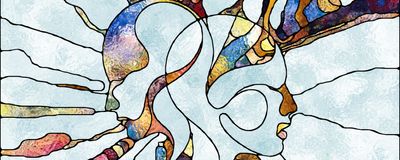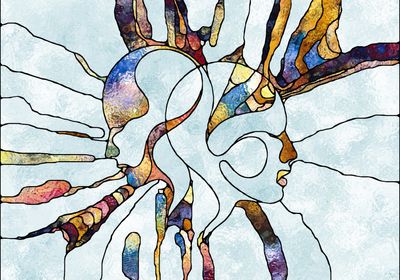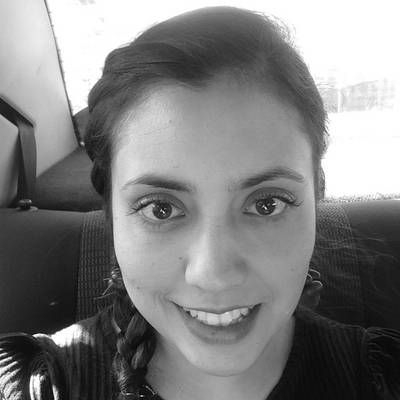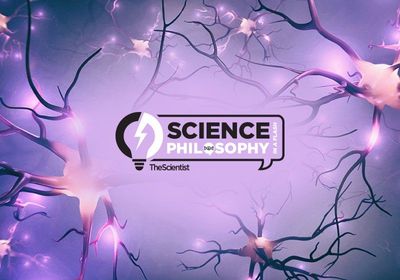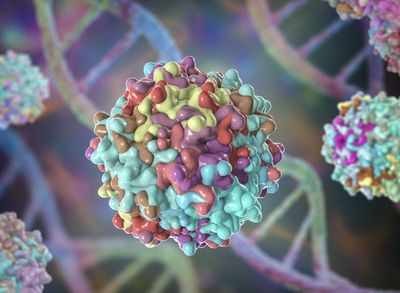ABOVE: Somatic mosaicism results from mutations in a cell that get passed on to daughter cells during development. These mutations, produced early in development, may contribute to psychiatric disorders such as schizophrenia. ©ISTOCK.COM, agsandrew
Although they are rare, noninherited mutations can have a large impact. According to a new study published in Cell Genomics, somatic mutations occurring during early development of the human embryo may contribute to some cases of schizophrenia.1 Specifically, the authors found recurrent mutations disrupting two genes, one of which previously linked to the disorder.
See “Mosaic Mutations May Not Be Rare”
The mutations discovered by the research team are “rare variants that affect a few people but may have a very large effect size,” said Thomas Burne, a neuroscientist at the Queensland Brain Institute who did not participate in this study. Burne noted that this is not going to explain how people develop schizophrenia in general, but it might be important for precision medicine and for prompting future discoveries.
Somatic mutations contribute to other psychiatric disorders such as autism and focal epilepsy.2,3 “It seemed like it was worth exploring whether something similar might be going on in schizophrenia,” said Christopher Walsh, a neurogeneticist at the Boston Children’s Hospital and coauthor of the paper. To test this hypothesis, Walsh and his colleagues analyzed the genomes of blood samples from 12,834 patients diagnosed with schizophrenia and compared them with samples from 11,648 control individuals.
See “Thousands of Mutations Accumulate in the Human Brain Over a Lifetime”
Using various algorithms designed to identify somatic copy number variants, the team discovered nonhereditary mutations that were significantly more common in patients with schizophrenia than in the control group. Recurrent mutations in two genes stood out. A small group of six patients had somatic deletions in neurexin 1 (NRXN1), a gene previously associated with schizophrenia,4 and a separate group of six patients had mutations in ATP-binding cassette subfamily B member 11 (ABCB11), a gene involved in liver function and not previously associated with the psychiatric disorder.
When they assessed the expression of ABCB11 in healthy adult postmortem midbrain tissue, Walsh and his colleagues saw strong expression in a subset of neurons previously implicated in schizophrenia.
Although these mutations may explain a small fraction of cases of schizophrenia, Walsh noted that the findings “can be thought of as analogous to studies of rare diseases in general.” First, they “don't seem so rare if you know somebody who has it, and rare mutations of large effect size offer, in some ways, the best window into defining mechanisms” to better understand a disease such as schizophrenia.
References
- Maury EA, et al. Schizophrenia-associated somatic copy-number variants from 12,834 cases reveal recurrent NRXN1 and ABCB11 disruptions. Cell Genom. 2023;3:100356.
- Sherman MA, et al. Large mosaic copy number variations confer autism risk. Nat Neurosci. 2021;24(2):197-203.
- Poduri A, et al. Somatic Activation of AKT3 Causes Hemispheric Developmental Brain Malformations. Neuron. 2012;74(1):41-8.
- Kirov G, et al. Neurexin 1 (NRXN1) Deletions in Schizophrenia. Schizophr Bull. 2009;35(5):851-4.
